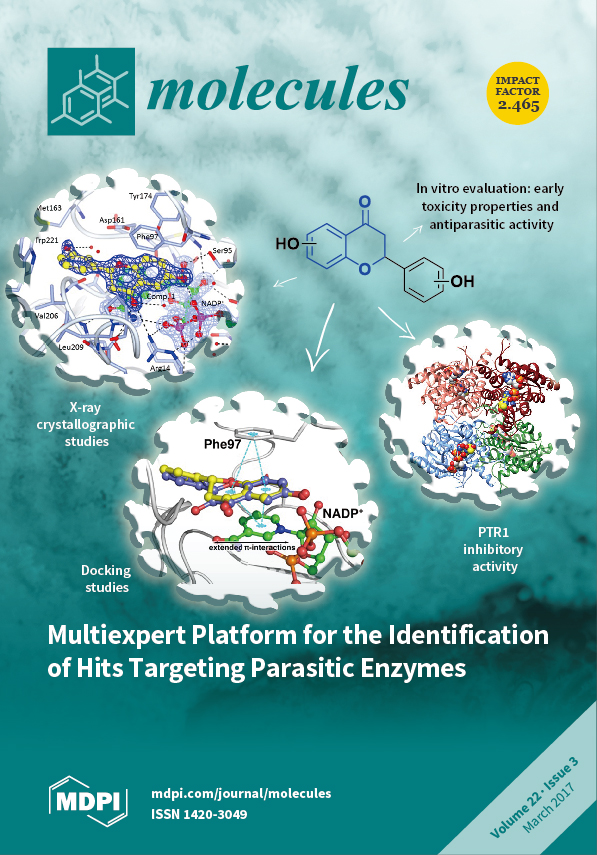On the front cover: Multiexpert Platform for the Identification of Hits Targeting Parasitic Enzymes

In the New Medicines for Trypanosomatidic Infections (NMTRypI) project funded by the EU and completed in January 2017, in which 13 partners participated, including the HITS Molecular and Cellular Modeling (MCM) and Scientific Databases and Visualization (SDBV) groups, novel anti-leishmanial and anti-trypanosomal hit compounds that inhibit pteridine reductase 1 (PTR1) were discovered. PTR1 is an enzyme of the Trypanosomatid folate/biopterin pathway unique to these parasites and can be inhibited by flavonoid compounds. In the present study, compounds with a flavanone scaffold were synthesized and characterized for their antiparasitic activity and ADME-tox properties.
Computational docking studies carried out by HITS researchers Ina Pöhner and Prof. Rebecca Wade (Molecular and Cellular Modeling (MCM) group), along with crystal structure determination, explain the observed differences in the inhibitory activity of the studied compounds against PTR1. Two crystal structures of one compound with different PTR1 enzymes provide a basis for further scaffold optimization to develop inhibitors targeting PTR1 enzymes from different parasites.
Flavio Di Pisa, Giacomo Landi, Lucia Dello Iacono, Cecilia Pozzi, Chiara Borsari, Stefania Ferrari, Matteo Santucci, Nuno Santarem, Anabela Cordeiro-da-Silva, Carolina B. Moraes, Laura M. Alcantara, Vanessa Fontana, Lucio H. Freitas-Junior, Sheraz Gul, Maria Kuzikov, Birte Behrens, Ina Pöhner, Rebecca C. Wade, Maria Paola Costi and Stefano Mangani. Chroman-4-One Derivatives Targeting Pteridine Reductase 1 and Showing Anti-Parasitic Activity. Molecules 2017, 22, 426. doi:10.3390/molecules22030426
Publication in Molecules Volume 22, Issue 3 (March 2017) with the front cover image.
Über das HITS
Das HITS (Heidelberger Institut für Theoretische Studien) wurde 2010 von dem Physiker und SAP-Mitbegründer Klaus Tschira (1940-2015) und der Klaus Tschira Stiftung als privates, gemeinnütziges Forschungsinstitut gegründet. Es betreibt Grundlagenforschung in den Naturwissenschaften, der Mathematik und der Informatik. Zu den Hauptforschungsrichtungen zählen komplexe Simulationen auf verschiedenen Skalen, Datenwissenschaft und -analyse sowie die Entwicklung rechnergestützter Tools für die Forschung. Die Anwendungsfelder reichen von der Molekularbiologie bis zur Astrophysik. Ein wesentliches Merkmal des Instituts ist die Interdisziplinarität, die in zahlreichen gruppen- und disziplinübergreifenden Projekten umgesetzt wird. Die Grundfinanzierung des HITS wird von der Klaus Tschira Stiftung bereitgestellt.